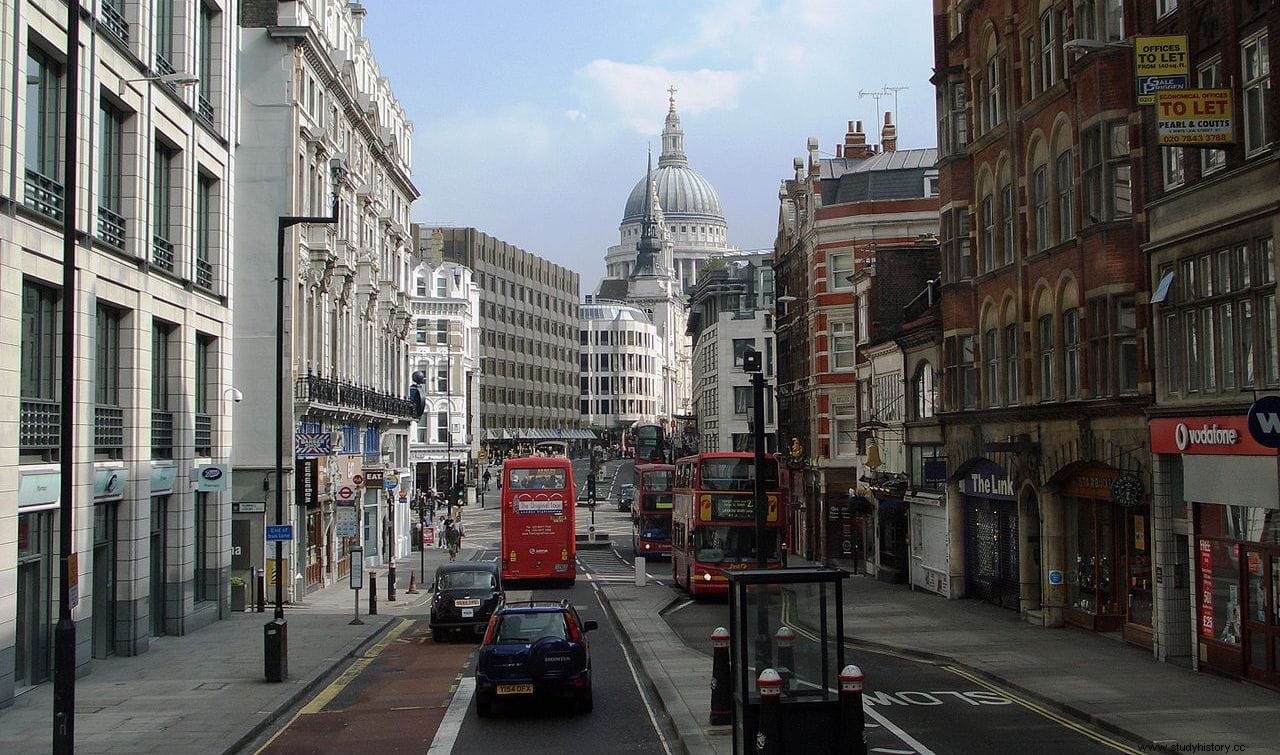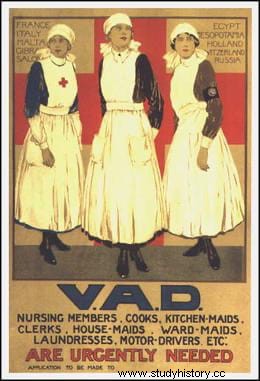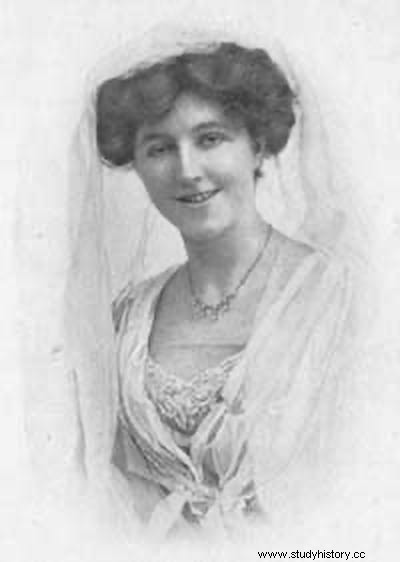Many readers will know who Catalina de Erauso, the Alferez Nun, was, a 17th-century Spanish woman who pretended to be a man to join the army and who fought in the Arauco War. Well, England also had a woman who, pretending to be a man and disguised as a soldier, managed to participate in the pre-campaign of the Somme during the First World War. She was a journalist and her adventure deserved a better ending than the one she had. Her name was Dorothy Lawrence.
The New Southgate Cemetery is a churchyard located in Brunswick Park, in the London district of Barnet (north of the city). Created in 1850 to compensate for the closure of urban cemeteries in London, it was originally destined, above all, to accommodate humble burials and for this reason there are hardly any tombs of famous people, as there are those of Highgate and Kensal Green. In fact, Dorothy's remains are probably the most popular, and yet they cannot be visited in the strict sense because it is not known in which plot she was buried; only that it occupies a common grave.

It was the epilogue of a story that, as we said before, did not have a happy ending, in a certain way according to its beginning. And it is that Dorothy was an illegitimate daughter and she did not know her parents, so she was adopted by a clergyman of the Anglican Church. She would have been born in 1896 in the town of Hendon, which is a municipality in the same district of Barnet in which she rests in peace, so she seemed predestined. At least that is what one version says, the traditional one, because another more recent one does not change the date of his arrival in this world but the place, Warwickshire (a county in the West Midlands), and even provides the names of his parents:Thomas Hartshorn Lawrence and Mary Jane Beddall.
Actually, her parentage has no relevance to this story. The important thing is that from a young age she had a vocation for journalism and, although she could not study at the university, she did manage to make The Times himself published some of her articles, which shows that she was not without worth. Moreover, she managed to achieve a certain appreciation for her quality, something that filled her with hope when the First World War broke out and she wanted to be a war correspondent, sending that proposal to several newspapers in Fleet Street (the London street where the largest part of the British press until the end of the 20th century).
But it was one thing to publish the more or less brilliant writings of an English lady and another to risk sending her to report on a war in situ her, without knowing if she would be able to withstand those conditions and with the risk that her work would be defective and the information provided by her would not be up to what the readers expected. Therefore, receiving no response, Dorothy took a second, more daring initiative and she went to France in 1915 to collaborate in the VAD ( The Voluntary AID Detachment ).

The VAD was a civilian unit of volunteers who worked as nurses and paramedics for the army. Founded in 1909 with the collaboration of the Red Cross and the Order of Saint John, at the beginning of the conflict it had more than seventy-four thousand members in two and a half thousand detachments. Most of its members were middle and upper class women, unaccustomed to the harshness of war conditions, which is why the authorities did not want them at the front and assigned them to the rear.
Consequently, Dorothy could not go to the front line either and chose to do it on her own, as a freelance correspondent. . That attempt of hers didn't work out either; the French police intercepted her when she was already in Senlis, barely three kilometers from the trenches, and ordered her to return to Paris. It was then that she made the big decision of her life to demonstrate, in her own words, "what an ordinary English girl, without credentials or money can achieve" :change her identity, dress up as tommy (nickname of the British soldier of that conflict) and infiltrate the BEF (British Expeditionary Force ) to share the same experience as the troops.

A Parisian cafe helped her gain the trust of two British soldiers and, along with eight others who also dared to collaborate, turn them into hers her «khaki accomplices» she, as she would call them later in a book:each one provided him with a piece of her uniform, avoiding raising suspicions. She, for her part, carried out the work of hiding her feminine appearance for a masculine one:she cut her hair -which until then reached her waist-, applied shoe polish and a disinfectant (potassium permanganate) to her skin. to darken it and even scraped the skin to simulate shaving damage.
Her body also needed touch-ups, with a homemade corset based on bandages ( "like a mummy" , in her own words) that she flattened her chest and burlap shoulder pads that gave her a more robust appearance. The only thing missing was learning to move in a more manly way and in that the khaki accomplices were once again useful. , who taught her to march in the military style. The last detail of her imposture was to obtain a legal identity, falsifying the papers; and thus Dorothy Lawrence became Private Denis Smith of the First Battalion, Leicestershire Regiment.

That unit had three centuries of tradition, since it was founded in 1688, so its history of military interventions was copious, having participated, among others, in the War of Spanish Succession and the US War of Independence. Now it was time for a world-wide contest.
The various battalions of the regiment were spread over four destinations:France, Flanders, Mesopotamia and Palestine. The First, in which the false soldier Smith would be framed, had landed in September 1914 in Saint-Nazaire, as part of the 16th Infantry Brigade of the VI Division, to serve on the Western Front, and advanced towards Flemish territory. It saw action in the summer of 1915, at the Battle of Hooge, in the easternmost sector of the famous Ypres Salient.
Dorothy cycled to Albert on the Somme with Tom Dunn, a sapper she met along the way. This improvised colleague, a miner from Lancashire, provided her with an abandoned cabin in the Chantilly Forest, near Senlis (in the Picardy region, so that she could spend the night instead of in the troop's lodgings, where she could be discovered. Thus, the intrepid journalist left the trenches every night to sleep on the floor of that precarious house («my private quarter» her, she defined her), taking advantage of those hours of solitude to get rid of her disguise. The khaki accomplices they were in charge of gathering some food for her.
It was also Dunn who brought her to the forefront, giving her a job as a sapper at the 179 Royal Engineers Tunneling Company , a company belonging to the 51st Division, dedicated to digging tunnels in no man's land as close as possible to enemy lines and thus hindering their possible charges. Conditions were harsh, with workers working underground in narrow, semi-flooded galleries lit only by candlelight, rotating shifts of six to twelve hours. In short, it was not something that just anyone could do and that is why the body tended to enlist soldiers who in their civilian life had the trade of miners.
Dorothy was not, hence, although she was part of the company, she performed other types of less demanding work, as was later documented. She had the advantage that the tunnelers enjoyed more freedom of movement than the rest of the soldiers, which made it easier for her to go from one place to another without raising suspicions. Even so, she was inside the trenches, which also implied a painful and exhausting context that took its toll on her health.

Barely ten days had passed since she joined the 179th, which gives an idea of what the Somme would mean exactly one year later. The fact is that it was inevitable that, sooner or later, Dorothy would have to receive medical treatment, which would mean being discovered and leaving her friends in an uncomfortable position. Aware of this, she decided to reveal the truth voluntarily. Not surprisingly, her immediate suspicion was that she was a spy, so she was arrested and transferred to Calais, where the Third Army was headquartered.
There she was interrogated by twenty officers and up to six generals without anyone being able to understand what she was doing there; It wasn't espionage, they agreed, but then what? Only at the end did the truth seem to prevail and it was almost as inconvenient as if she had actually been an agent.
And it is that she did not speak well of the military world that a woman had infiltrated her ranks, something that, she feared, could encourage others to do the same. On the other hand, what caused the most concern to the commanders was to give a lady a suitable stay. For this reason, a military judge ordered Dorothy to be held in France, in the Bon Pasteur Convent, thus ensuring that if she had obtained confidential information she would not be able to reveal it, a measure reinforced with the sworn requirement not to be able to tell about her experience. . This is how things remained until September 1915, after the Battle of Loos, when she was repatriated to England.

She crossed the English Channel on board a ferry, on which she coincided with Emmeline Pankhurst, leader of the suffrage movement, who was returning from a stay in Paris and had asked the militants of the WSPU (Women's Social and Political Union ) to interrupt their protest actions while the war lasted and encouraged them to support the troops, considering that Germany was a danger to humanity. Pankhurst encouraged Dorothy to recount her ordeal publicly for her and even offered to do so at one of her rallies.
She tried writing for a London monthly pictorial called The Wide World Magazine she, specialized in travel and adventures (her collaborators were Arthur Conan Doyle, Henry Morton Stanley and Alexander Kent, among others). But she couldn't get past that; articles on the subject and the project to publish a book were quickly blocked by the War Office (War Office, government department in charge of the administration of the army since 1857, germ of the Ministry of Defense).
The War Office invoked the Defence of the Realm Act (The Defense of the Realm Act) enacted in 1914 and which gave broad powers to the government to censor any information that "could cause discontent or alarm among Her Majesty's forces or among the civilian population" , so that the journalist had to postpone her book until 1919, once the First World War was over. She titled it Sapper Dorothy Lawrence. The only English woman soldier ("Sapper Dorothy Lawrence. The only English female soldier") and received good reviews, not only in England but also in Australia and America.
Unfortunately, to the Defence of the Realm Act it was succeeded in 1920 by the Emergency Powers Act (Emergency Powers Act), which was a new tool for the War Office to continue censoring:as a result, Dorothy's work was largely cut back and ended up being a commercial failure. That meant definitively losing hope of earning her living as a writer, but also as a journalist. She required psychological care and was admitted to various centers, to the point that her name was used as a synonym for any mental institution.
She passed away on October 4, 1964, at the age of sixty-eight. As we said at the beginning, she was buried in a grave without a name, leaving no family and hardly any photos. But perhaps two things would have consoled her:knowing that numerous ex-combatants from the two world wars were also buried there and that the Imperial War Museum she claimed her name at the exhibition she organized for the centenary of the First.
